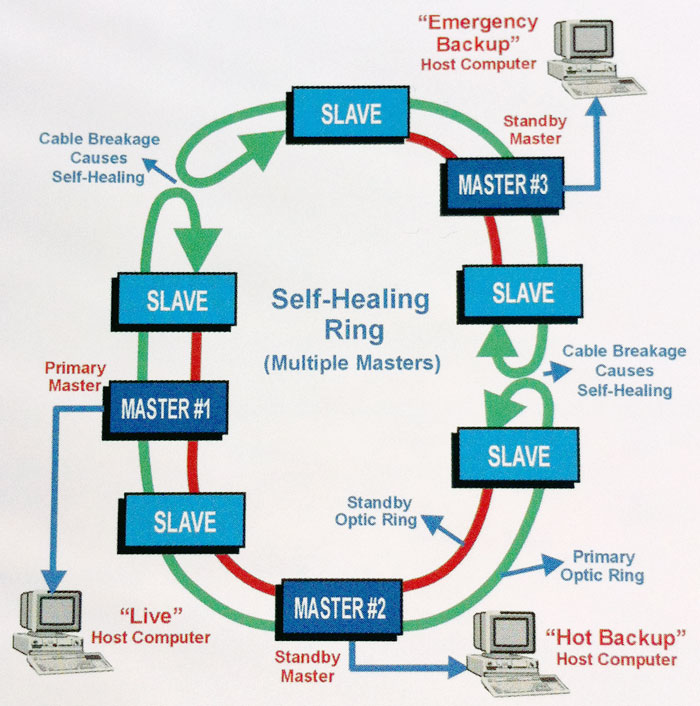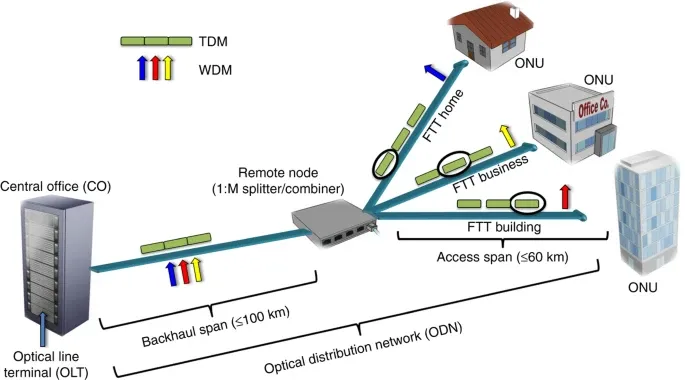The Importance of a Fiber Optic Security System in Safeguarding Critical Infrastructure and Facilities
The Importance of a Fiber Optic Security System in Safeguarding Critical Infrastructure and Facilities
Blog Article
Why Fiber Optic Security Systems Are the Future of Security
The transition to fiber optic security systems marks a considerable development in the realm of protection, driven by their phenomenal data transmission capabilities and resilience to exterior interferences. These systems not only assist in faster and much more trusted interaction however also present an economical solution with minimized maintenance requirements. As the landscape of protection develops alongside arising innovations such as AI and IoT, the possibility for optical fiber to enhance and redefine safety and security infrastructures becomes significantly apparent. However, the effects of these advancements raise crucial inquiries concerning the future of safety and security measures and their efficiency in an ever-changing atmosphere.
Advantages of Fiber Optic Equipments
One of the primary advantages of fiber optic systems is their exceptional data transfer ability, which assists in the transmission of large quantities of information over lengthy ranges without significant loss. This particular is particularly helpful for safety applications that need the continuous tracking and transfer of high-definition video clip feeds, sensing unit data, and various other essential info. Fiber optics can suit the expanding demands of modern safety and security systems, ensuring that data remains intact and reliable.
In addition, fiber optic cords are less vulnerable to electromagnetic disturbance, which can be a significant concern in atmospheres with different digital devices. This resistance boosts the stability of the data being transferred, thus decreasing the threat of information breaches or system failures. Furthermore, fiber optic systems are naturally a lot more safe than traditional copper cords, as taking advantage of a fiber optic line without discovery is exceedingly challenging.
The durability of fiber optic cords additionally adds to their allure. They are resistant to environmental elements such as dampness and temperature level changes, decreasing upkeep costs and raising system long life. Overall, these advantages placement fiber optic systems as a robust and reliable selection for modern safety facilities, guaranteeing dependable and safe information transmission.
Enhanced Information Transmission Rate

The capability to transmit substantial quantities of data swiftly helps with the seamless assimilation of high-def video clip feeds and progressed analytics. Safety and security systems can now process and evaluate information in real-time, improving action times and situational awareness. Furthermore, fiber optic links support longer transmission ranges without degradation of signal high quality, making them optimal for large safety networks.
The boosted rate of fiber optic systems not only improves the effectiveness of safety operations but also reduces latency. This is specifically crucial in essential circumstances where prompt decision-making can protect against protection breaches or alleviate prospective dangers. As organizations remain to focus on safety and security and efficiency, the demand for fast and reliable information transmission will unquestionably solidify fiber optic systems as a cornerstone of modern-day safety infrastructure.
Resistance to Interference
Fiber optic security systems regularly show extraordinary resistance to electro-magnetic disturbance, an important benefit in environments vulnerable to digital noise. Unlike typical copper cords, which can be negatively impacted by electro-magnetic areas, superhigh frequency interference, and various other types of electric disturbance, fiber optic cords utilize light to transfer information. This intrinsic residential property guarantees that the signals stay clear and unchanged, despite bordering electronic task.
Making use of glass or plastic fibers in fiber optic modern technology develops an obstacle versus interference, enabling trusted data transmission fiber security also in tough situations such as commercial centers, urban areas with high electronic traffic, or areas near radio towers. This characteristic substantially minimizes the likelihood of signal deterioration or loss, making fiber optic systems especially appropriate for protection applications where stability and accuracy of data are extremely important.
Moreover, this resistance to interference boosts the overall performance and dependability of safety and security systems, making sure that monitoring and alert systems function seamlessly. In a world where protection is significantly threatened by sophisticated technologies, the strength of fiber optic systems stands out as a critical attribute, strengthening their condition as an essential part of contemporary safety facilities.
Cost-Effectiveness With Time
Significant expense savings can be attained in time with the application of fiber optic safety systems. While the initial investment may seem greater compared to typical copper-based systems, the long-lasting monetary benefits emerge with minimized functional and maintenance costs (fiber security). Fiber optic cables are naturally much more resilient and less vulnerable to ecological aspects, which equates to decrease replacement and fixing expenditures over their lifespan
In addition, fiber optic systems call for less power to run, which even more lowers energy expenses. Enhanced data transmission abilities permit for fewer repeaters and amplifiers, decreasing tools investment and enhancing installation procedures. The scalability of these systems likewise adds to cost-effectiveness, as organizations can increase their safety and security infrastructure without sustaining considerable additional expenses.
An additional factor to take into consideration is the enhanced effectiveness in surveillance and response abilities that fiber optics offer. Improved real-time information transmission can bring about quicker incident action times, possibly mitigating losses and liabilities connected with safety and security violations. In sum, the long-term advantages of fiber optic safety systems not only justify the preliminary expense however likewise position them as a monetarily sensible option for companies looking for durable protection services.

Future Technologies in Protection
Advancing innovations are set to revolutionize safety and security systems, incorporating expert system (AI) and artificial intelligence to boost hazard detection and reaction abilities. These technologies will certainly permit protection systems to analyze substantial amounts of data in real-time, identifying patterns and abnormalities that suggest possible hazards. This proactive technique will certainly make it possible for faster decision-making and extra reliable case responses.
In addition, the unification of the Net of Things (IoT) is leading the means for interconnected security tools, using detailed security and tracking. Smart sensing units can relay information concerning ecological changes, while automated alerts can notify protection workers right away of questionable activities.
Moreover, the evolution of biometric modern technologies will anchor certainly additionally bolster security devices. Face recognition, fingerprint scanning, and retina identification are coming to be extra innovative, supplying layers of verification that are hard to bypass.
Verdict
In final thought, fiber optic safety and security systems stand for a considerable development in security technology, offering unparalleled data transmission website link rate, resistance to electromagnetic disturbance, and lasting cost-effectiveness. As the demand for sophisticated safety solutions remains to grow, the assimilation of optical fiber with arising technologies such as AI, IoT, and biometrics will certainly further enhance protection facilities (fiber security). The combination of these advancements will make certain a much more safe and responsive setting, solidifying fiber optics as a foundation of future protection systems
Report this page